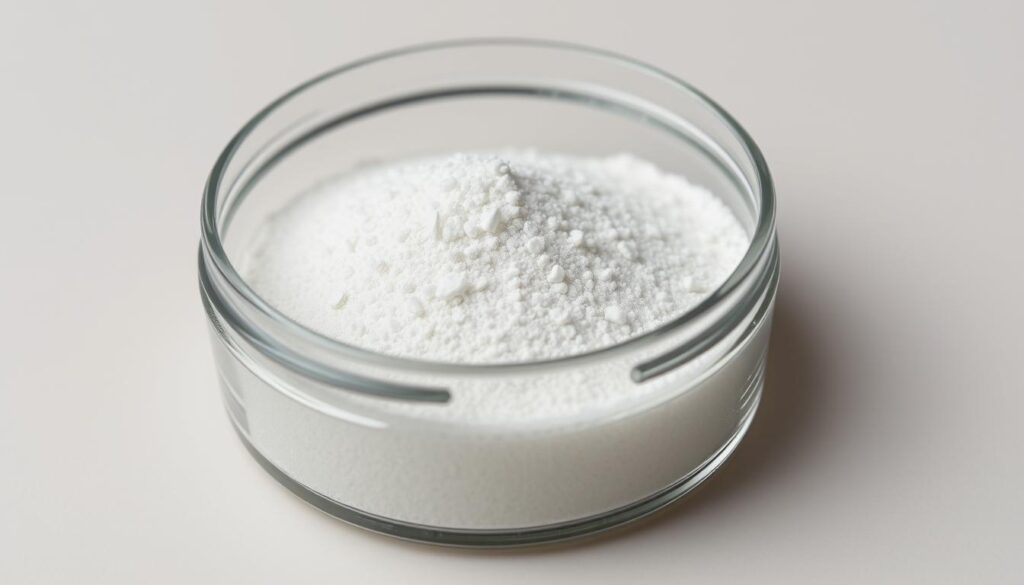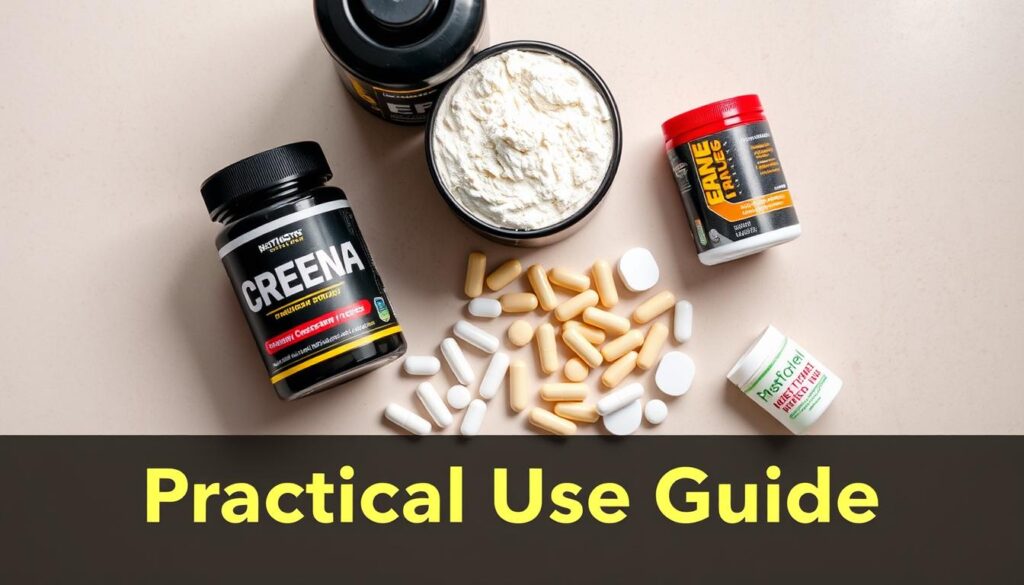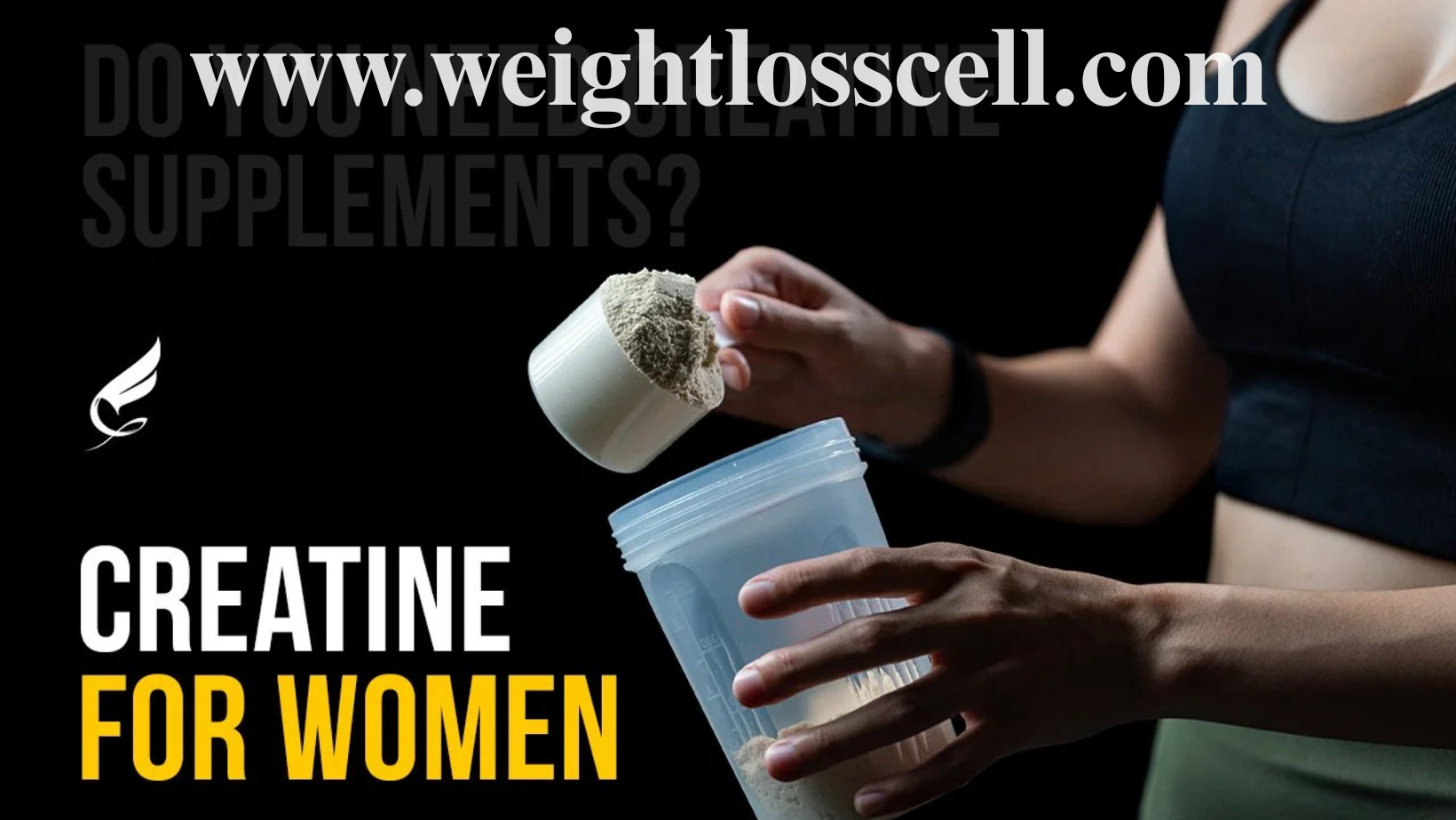Creatine is a natural energy molecule made in the liver, kidneys, and pancreas. About 95% is stored in skeletal muscles, with the rest in the brain, heart, and nearby tissue.
This guide explains who gains most from creatine supplementation, who should be cautious, how to dose when results show up, and how to pick quality products in a largely unregulated market.
Top athletes use these supplements across sports, and major bodies like the IOC and NCAA permit them. Research links the compound to improved short high-intensity performance, increased strength and lean tissue gains when paired with resistance work, and possible cognitive support for older adults.
Safety notes: Most people tolerate creatine well, but evidence is limited for pregnancy, breastfeeding, diabetes, kidney or liver illness, and some mood conditions. A few users gain water weight in muscles without added fat.
Key Takeaways
- Creatine is a natural energy source stored mainly in muscles.
- It helps short-term high-intensity performance and boosts strength with training.
- Supplementation is common in most sports and is research-backed.
- Some groups should seek medical advice before trying it.
- Expect faster gains with resistance work; weight changes may reflect water, not fat.
Creatine at a Glance: What It Is and How It Works Today
Think of creatine as your body’s quick fuel reserve for sprints, lifts, and sudden demand on muscles.
Natural and dietary sources
About half of the daily creatine, roughly 1–2 grams per day, comes from food, especially red meat and seafood. Vegetarians and vegans usually start with lower baseline stores and may see larger gains when they try creatine supplementation.
Where it lives and what it fuels
Roughly 95% of total creatine sits in skeletal muscles, with small pools in the brain, heart, and other tissues. That storage pattern explains why most performance changes show up in strength and power tasks.
How it powers short bursts, not endurance
Inside cells, creatine converts to creatine phosphate and rapidly regenerates ATP. That process supplies quick energy for brief high-intensity exercise sprints, jumps, and heavy lifts without directly improving aerobic endurance.
| Item | Typical amount | Practical note |
|---|---|---|
| Dietary sources | ~1–2 g/day | Mostly from red meat and seafood |
| Endogenous production | Made in the liver, kidneys, and pancreas | Complements dietary intake to refill stores |
| Storage distribution | ~95% in skeletal muscles | Explains the power and strength effects |
Creatine comes in multiple forms, powders, tablets, capsules, liquids, and bars, so supplementation choices are flexible. This scientific snapshot sets the stage for practical dosing, timing, and product selection later in the guide.
Performance Upside: How Creatine Improves Exercise and Muscle Outcomes
Short bursts of effort, like a heavy set or a sprint, are where creatine most clearly changes results.
Strength and power gains in short, high-intensity work
Creatine speeds ATP resynthesis, which lets muscles tap into quick energy sooner. That boosts raw power during resistance training and sprint-like efforts.
Lean mass and faster recovery when paired with training
When paired with structured resistance training, supplementation adds measurable lean mass. A 2022 review found about a 1.1 kg average increase in adults who trained while using creatine.
Users often lift more reps at the same load and keep training volume higher across sessions. That leads to steady strength gains within weeks if nutrition and program stay consistent.
| Outcome | Typical change | Timing |
|---|---|---|
| Lower-body strength | Notable improvement | 2–8 weeks |
| Lean body mass | ≈1.1 kg with training | Weeks to months |
| Repeat sprint or set quality | Better maintenance of power | Immediate to weeks |
| Recovery during reduced activity | Muscle preservation | Weeks |
Responders, non-responders, and sex differences
About 15–30% may show little change. Baseline stores, muscle fiber type, and diet matter. Studies report smaller average gains in women, but benefits still appear across sexes.
Track results with a simple training log to judge personal response and to adjust supplementation and nutrition for better outcomes.
Beyond the Gym: Creatine for Older Adults and Brain Health
Small evidence-based steps can slow age-related decline in muscle mass and preserve daily function.
Sarcopenia hits strength, power, and balance. When older adults add resistance training, creatine supplementation often boosts lower-body strength and lean mass. That combo can cut fall risk and lower fracture chances.
Research hints at bone gains, too. Some studies report slower bone mineral density loss and improved markers of bone turnover, though larger trials are needed to confirm long-term effects.
Cognition shows promise. Trials link short-term memory, reasoning, attention span, processing speed improvements, especially when the brain faces stress like sleep loss or low oxygen. Results vary; advanced neurodegenerative stages may respond less.
- Short high-dose protocols can reduce tiredness and lift daily energy.
- Combine supplements with balance drills plus lower body strength work to help with independence.
- Prioritize hydration, adequate protein, medical screening, and tailored exercise plans.
Note: This approach is an adjunct to broad lifestyle steps for healthy aging, not a standalone cure. Discuss supplementation with a clinician before starting.
Risks, Side Effects, and Safety Considerations
Understanding safety steps helps you use supplements with fewer surprises.
Gastrointestinal upset is the most common problem. Nausea, cramping, or diarrhea often follow taking too much creatine at once or aggressive loading. Start with smaller, split doses and take doses with food to ease symptoms.
Initial weight change comes mainly from extra water held inside muscle cells, not added fat. That intramuscular water can raise body weight quickly and affect athletes in strict weight classes.

Certain groups need medical review before using creatine supplementation. People with known kidney or liver disease, pregnant or breastfeeding individuals, those with bipolar disorder, and many with uncontrolled diabetes should consult a clinician.
One controlled study showed improved blood sugar when combined with exercise, but individual health differences matter. High caffeine intake (>300 mg/day) and stimulants like ephedra may raise cardiovascular or neurological hazards. Some limited data link heavy caffeine plus creatine with faster Parkinson’s disease progression. Evidence is not definitive but worth caution.
- Begin with lower daily doses and split servings.
- Monitor kidney and liver labs if you have risk factors.
- Choose tested products to reduce contamination risk.
Bottom line: discuss your medical history and medications with a healthcare professional before taking creatine supplementation.
How to Take Creatine Dosage Loading and Timing
A practical approach to creatine uses modest daily amounts, with optional short loading for faster results.
Daily maintenance: For most people, 2–5 grams per day of creatine monohydrate is a reliable starting point. This dose keeps muscle stores topped up while lowering GI issues.
Loading vs no-load: Classic loading uses about 20 grams per day, split into smaller servings for 5–7 days, to speed saturation. A no-load path simply takes the maintenance dose; full effects may take ~28 days to appear.
Special protocols and timing
Older adult studies often use 20 g/day for 7–10 days, then taper to 10 g/day or 4 g/day for longer upkeep. Discuss this with a clinician before starting.
Take supplements at a consistent time each day. Pairing a dose with a meal or post-workout snack can ease tolerance and improve adherence.
| Goal | Typical protocol | Notes |
|---|---|---|
| Quick saturation | ~20 g/day for 5–7 days | Split into 4 doses to reduce GI issues |
| Daily maintenance | 2–5 g per day | Monohydrate preferred steady approach |
| Older adults | 20 g/day 7–10 days, then 10 g/day or 4 g/day | Medical review advised |
Spread larger totals into smaller portions to lower stomach upset. Drink adequate fluid to support kidney clearance and training sessions. Track weight and performance over several weeks to judge results. Remember: taking too much creatine at once adds side effects without extra gain.
Choosing a Supplement Form Quality and Regulation
Picking the right product matters more than flashy claims on a label.
Creatine monohydrate stands out after decades of human trials. It has the strongest evidence for improving short, high-intensity power and strength. Most studies use this form, so it is the best-backed option for most people seeking predictable results and safety.

Supplements arrive as powders, capsules, tablets, liquids, and bars. Powders usually win for dosing accuracy and cost per gram. Capsules suit travel and compliance, while liquids and bars may add fillers or raise price without extra benefit.
The U.S. supplement market is not regulated like drugs. Labels can misstate content or hide contaminants. Look for third-party testing seals such as NSF Certified for Sport or Informed Choice. Prefer clear ingredient lists with monohydrate listed as the sole active component.
- Check labels: lot numbers and certificates of analysis when available.
- Avoid: proprietary blends that hide actual creatine content or add stimulants.
- Buy small first: test tolerance before committing to bulk tubs.
- Store properly: keep sealed in a cool, dry place to prevent clumping and preserve potency.
Bottom line: New patented forms rarely beat monohydrate in studies. Match product choice to your goals, budget, and any sport compliance needs for safe, effective supplementation.
Benefits and risks of creatine: Who Stands to Gain and Who Should Be Careful
Deciding to use creatine depends on training, baseline diet, and health status.
Prime candidates
People doing resistance training or sprint-based work often see faster strength and power gains when they add creatine supplementation to a solid program.
Older adults aiming to counter sarcopenia may gain lean mass, better lower-body strength, and sometimes clearer daily thinking when supplements are paired with exercise.
Who should consult a clinician?
Seek medical advice before starting if you have kidney disease, uncontrolled diabetes, bipolar disorder, or if you are pregnant or breastfeeding.
Competitors should confirm anti-doping rules even though major organizations permit use. People returning from injury may use short-term supplementation to preserve muscle during reduced training.
- Vegans and vegetarians often respond strongly due to lower baseline stores, but choose quality products and dose carefully.
- Start slowly, split doses to reduce GI upset, and monitor weight and tolerance.
- Reassess goals periodically, track training logs to spot non-responders, and guide continuation.
You may like to read: How Gut Microbes Influence Mental Well Being
Practical Use Guide: Maximizing Results While Minimizing Drawbacks
Use a practical routine to turn small supplement gains into lasting strength and better training days.
Training framework and fuel
Prioritize progressive overload with multi‑joint lifts and enough weekly volume to tax muscles. Pair that work with adequate dietary protein and calories to support repair and long-term strength.
Dosing, timing, and tolerance
Take creatine daily and split larger totals into two or more servings to reduce GI upset. Consistent intake helps muscle saturation and clearer performance signals in weeks, not days.

Hydration stimulants and recovery
Keep fluids steady around training, especially in heat. Limit high caffeine intake (>300 mg/day) and avoid stimulants such as ephedra or Ma Huang while using creatine supplementation.
- Adopt post-workout routines: nutrition, mobility, and sleep to support recovery.
- Weight-class athletes: expect modest water shifts in the body and plan cuts accordingly.
- Review cycles every 8–12 weeks to assess progress and tolerance.
- Non-responders: check product quality, training plan, and slowly adjust dose within safe ranges.
Final note: consistent resistance training plus steady creatine supplementation produces the clearest strength and performance effects over time.
Myths vs Facts: Clearing Up Common Misconceptions
Many claims about supplements come from stories, not controlled trials. This section separates rumor from evidence.
Creatine and whey protein serve different roles. Creatine boosts short-term energy turnover to improve muscle performance during sprints and heavy lifts. Whey supplies amino acids that help repair tissue and support long-term muscle mass gains.
Early increases in weight usually reflect extra water held inside muscle cells, not added fat. That shift often stabilizes once training and intake are consistent.
Research in healthy adults using recommended doses finds no clear adverse kidney or liver markers within typical study windows. That said, people with existing kidney disease should avoid supplementation until a clinician advises otherwise.
What studies show about caffeine and parkinson disease is mixed. Some reports suggest high caffeine plus certain supplements may worsen outcomes, but evidence is inconclusive. Controlled trials remain limited.
- Creatine monohydrate is the best-studied form and usually the first choice.
- Real strength gains take weeks and depend on training, not instant bulky change.
- Consult a qualified professional for tailored guidance based on medical history.
Conclusion
Summing up, a modest, evidence-based plan helps you add reliable power and muscle over time.
Creatine monohydrate at 2–5 g daily is the simplest, best-studied route for most healthy adults seeking improved performance and greater strength when paired with consistent resistance training.
Choose tested products with clear labels, avoid stimulants like ephedra or Ma Huang, and manage high caffeine intake. If you have medical issues or take medicines, consult a clinician before you take creatine supplementation.
Expect full effects in weeks without loading for faster saturation if preferred. Track training metrics, weight, and how your body feels to judge if supplementation helps you meet goals.
Use this guide as a practical frame: quality supplements, smart dosing, protein, sleep recovery, and steady training deliver the clearest health returns.
You may like to read: Prostate Cancer Key Facts for Men
FAQs: Creatine Exploring the Pros and Cons

Are there any negatives to taking creatine?
Even recommended doses of creatine monohydrate supplementation may cause kidney damage; therefore, anybody using this supplement should be warned about this possible side effect, and their renal function should be monitored regularly.
Is creatine actually worth using?
Creatine may be useful in athletes who require bursts of speed or extra muscle power, including sprinters, weight lifters, and team sport players. Although there is no assurance that creatine will benefit every athlete, there is some indication that it will not be harmful when taken as prescribed.
How much creatine do I get from food?
Typical diets supply roughly 1–2 grams per day from sources such as beef, pork, and fish. Those who eat little or no animal products often have lower baseline levels and may notice bigger effects from supplementation.
What improvements can I expect in strength and performance?
Supplementation paired with resistance training commonly increases strength, power, and sprint performance. People often see measurable gains in short, high-intensity tasks and better recovery between bouts of effort.
Is 3000 mg of creatine a day enough?
When your muscles are already saturated with creatine, you do not need anywhere as large a daily dose to keep it at that level. Rather, research indicates that you only require approximately three to five ( 3g to 5g ) grams/day (14 mg/lb of body weight or 30 mg/kg of body weight) and you will be good to keep your muscle reservoirs.
Who responds best to creatine, and are there sex differences?
Response varies. Those with lower initial muscle creatine, often older adults or vegetarians, tend to respond more. Men and women both benefit, though absolute gains may differ due to baseline muscle mass and training status.
Is creatine ok for girls?
The monohydrate form of creatine is a safe and efficient supplement; it may enhance athletic performance, strength, and fitness of both men and women.
Is creatine safe for long-term use, and does it harm the kidneys?
For healthy individuals, typical doses of 2–5 grams daily show a strong safety record in trials lasting years. People with existing kidney or liver disease, or those on certain medications, should consult a clinician before starting any supplement.
What side effects should I watch for?
The most common complaints are mild gastrointestinal upset when taking large single doses and temporary water retention. Taking the dose with food and splitting it across the day reduces stomach issues.
How should I dose and time creatine for the best results?
A common maintenance dose is 2–5 grams daily. Some use a short loading phase, about 20 grams daily, split over 4 doses for 4–7 days to saturate muscles faster, but loading is optional. Consistent daily intake matters more than exact timing. Benefits often appear over days to weeks.
Which form of supplement is recommended?
Creatine monohydrate remains the best-supported form for effectiveness and cost. Choose reputable brands that provide third-party testing for purity to avoid contaminants in an unregulated market.
Is creatine gender neutral?
A 2021 study identified the creatine supplementation to have increased strength, power, and anaerobic performance in both sexes. Nevertheless, the research also observed that the magnitude of change is also variable according to other factors like training status, dosage and type of exercise modality employed.
How do I maximize gains and reduce drawbacks when using creatine?
Combine supplementation with resistance training, adequate protein intake, and proper hydration. Monitor stimulant use like caffeine, in large amounts, may affect hydration and sleep, which influence recovery and performance.
What happens when you stop using supplements?
Stopping supplements can produce short-term effects, particularly when the supplement was beneficial regarding energy levels, mood, digestion, or sleep. The symptoms are quite small, and most of them are temporary, but in case of their continuation, your body might still need support.
What myths should I ignore about this supplement?
Creatine is not an anabolic steroid. It does not inherently cause permanent kidney damage in healthy users. Early weight gain often reflects water stored in muscle rather than fat. Evidence for neurodegenerative diseases like Parkinson’s is emerging, but it is not always conclusive and relies on peer-reviewed studies.





